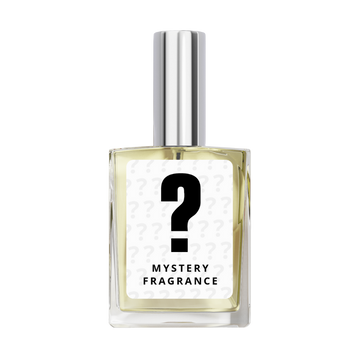HOW ARE PERFUME AND COLOGNE MADE?
Applying a perfume is a rather simple action to understand. Open up a bottle, spray the neck and wrists, then let the perfume do what it does best, smell good. How simple is that?
It's so, that it is almost hard to imagine how much work really goes into creating fragrance. We're going to be diving into some interesting info about how cologne and perfume are developed, and how the industry was created in the first place.
A BRIEF HISTORY OF PERFUME-MAKING
The ancient Egyptians were the first people to create perfume (as far we know at least.) However, these fragrances were not like the fragrances you use today. Rather than come in the form of liquid, these fragrances came in the form of blocks of fragranced material or even scented balms.
Romans and Persians took this concept to the next level, and it is believed that Persians were the first peoples to develop the distillation process. While morals in Pompeii display exactly how perfume was crafted in Italy in that time; by pressing olives, adding meticulously measured amounts of plants and woods, and finally leaving the fragrance to 'settle'. allowing the scent to settle into the oil, so that it can be sold.

PERFUME CREATION IN THE EAST
Although creating them differently, ancient eastern cultures were using perfumes as well.
In ancient China, fragrance was not worn on the body, but instead it was used to add a nice scent to special places such as temples. The Chinese believed that that a scent can purify a room, some believing that it could even kill disease.
PORTABLE POMANDER?
In Medieval times, the portable pomander was popular if you were anyone worth knowing. Essentially you would carry around a personal portable pomander, a small ball of scented ingredients, releasing pleasant aroma as you walk around.
The invention of the portable pomander aught on rather quickly. Being easy to make, as there was no distillation process, keeping up with supply for this demand in a pre-industrial revolution era was rather easy.

It wasn't until the 14th century, when alcohol-based perfume was created. Before alcohol-cased perfume existed fats or oils were used to provide a base for the scented oil. In Europe ingredients such as deers's musk, ambergris (sperm whale vomit... yes you read that right), and civet taken from the glands of civet cats. You may be thinking what disgusting smells were used, but some of these scents are still used in perfume today. In Italy, aqua mirabilis, was created and this is when proper perfume as we know it was created.
MODERN COLOGNE AND PERFUME-MAKING
Many of the people who create fragrance today are highly qualified and trained extensively. Usually having a degree in chemistry or pharmacy with other qualifications as well.
Ingredients are decided on by perfumers and the extraction of them must now happen. Oils are extracted from a range of substances such as flowers, trees, woods, etc... For this to happen steam distillation occurs where steam is passed through the ingredient, which turns its oil into a gas. This gas is then cooled which turns it into a liquid. This created whats called the essential oil.

Once all the oils of different ingredients have been created the perfumer must now develop a fragrance by blending them all together, this process can sometimes takes YEARS! Once decided on, the essential oil is mixed with a base liquid (usually denatured alcohol.)
These methods of fragrance creation are practiced across the world, and by the ALT. Team! At ALT. we spend months studying some of the most popular designer fragrances, then blending ingredients to replicate the essence of the original, at a reduced price. Although it is not the easiest process, nothing great comes easy.
If you would like to try some of our 'inspired by' fragrances, visit the ALT. Fragrances website today where you can order all our fragrances in sample sizes, allowing you to test each one before you commit to a full-sized bottle!
Disclaimer: all products mentioned above, along with their labelling, are a guide and should not be confused with the actual fragrance brand. Any name trademarks and copyrights are the property of their respective designers or makers. Please note, these perfumes and candles are not to be confused with the originals, and we have no affiliation with any companies mentioned. Our interpretations of the fragrances and candles were created through chemical analysis and personal development, and their description is solely to give the customer an idea of the nature of the scent. It is not designed to mislead or confuse the customer in any way, and does not infringe on the manufacturer's or designer's name or trademark.


















